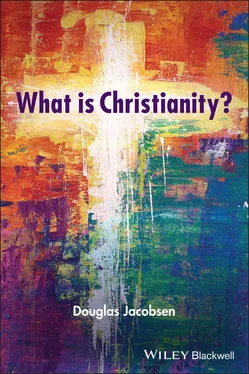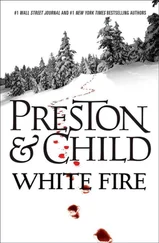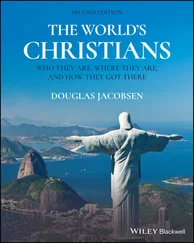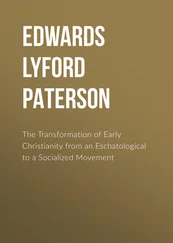1 Cover
2 Title page What Is Christianity? Douglas Jacobsen
3 Copyright
4 Dedication
5 List of Figures
6 List of Tables
7 Begin Reading
8 Conclusion: What Is Christianity Today?
9 Index
10 End User License Agreement
1 i
2 ii
3 iii
4 iv
5 v
6 vi
7 vii
8 viii
9 ix
10 x
11 xi
12 xii
13 1
14 2
15 3
16 4
17 5
18 6
19 7
20 8
21 9
22 10
23 11
24 12
25 13
26 14
27 15
28 16
29 17
30 18
31 19
32 20
33 21
34 22
35 23
36 24
37 25
38 26
39 27
40 28
41 29
42 30
43 31
44 32
45 33
46 34
47 35
48 36
49 37
50 38
51 39
52 40
53 41
54 42
55 43
56 44
57 45
58 46
59 47
60 48
61 49
62 50
63 51
64 52
65 53
66 54
67 55
68 56
69 57
70 58
71 59
72 60
73 61
74 62
75 63
76 64
77 65
78 66
79 67
80 68
81 69
82 70
83 71
84 72
85 73
86 74
87 75
88 76
89 77
90 78
91 79
92 80
93 81
94 82
95 83
96 84
97 85
98 86
99 87
100 88
101 89
102 90
103 91
104 92
105 93
106 94
107 95
108 96
109 97
110 98
111 99
112 100
113 101
114 102
115 103
116 104
117 105
118 106
119 107
120 108
121 109
122 110
123 111
124 112
125 113
126 114
127 115
128 116
129 117
130 118
131 119
132 120
133 121
134 122
135 123
136 124
137 125
138 126
139 127
140 128
141 129
142 130
143 131
144 132
145 133
146 134
147 135
148 136
149 137
150 138
151 139
152 140
153 141
154 142
155 143
156 144
157 145
158 146
159 147
160 148
161 149
162 150
163 151
164 152
165 153
166 154
167 155
168 156
169 157
170 158
1.1 Figure of Jesus as a young shepherd (from the catacomb ofPriscilla, Rome, third century) and Jesus as a middle-agedjudge (from the Chora Church in Istanbul, originallyconstructed in the later fourth century)
1.2 Geographic locations of the three traditions created by the Great Division
1.3 Diagram of the Great Division summarizing Christological differences
2.1 Holy Trinity Orthodox Cathedral (Sibiu, Romania), interior of main dome
2.2 Floor plans of the ancient Temple in Jerusalem and a typicalOrthodox church showing similarity of layout
2.3 Simplified map of Eastern Europe showing national boundariesin 1700 and 1900
2.4 Interior of small Orthodox church (Cyprus)
3.1 Statues of the Infant of Prague (the young Jesus) for sale at a shop near the Church of Our Lady Victorious in Prague (Czech Republic), where the original statue is on display
3.2 Chiesa di Sant’Ignazio di Loyola, a Baroque style Catholicchurch in Rome built in the early 1600s, showing apse at thefront of the sanctuary and details from the painted ceiling
4.1 Interior of Hungarian Reformed Church in Sibiu, Romania illustrating the centrality of the pulpit in Protestant church architecture
4.2 Religious map of Catholic and Protestant Europe c. 1650. (Regions colored white were predominantly Orthodox)
5.1 Aimee Semple McPherson (front row, second from left) in a performance at her church, Angelus Temple, in Los Angeles
5.2 Social structure of Pentecostalism
6.1 Graph showing changing percentage of all Christians who lived in Europe and who lived elsewhere during the period 1500 to the present
7.1 Global geographic profiles of the world’s four largest religions
7.2 Nine regions of the world, with percentage (in parenthesis) of world’s Christian population
2.1 Major Eastern Orthodox Churches with current ecclesiastical status and estimated membership
4.1 Five major Protestant families, representing two-thirds of all Protestants worldwide
Introduction What Is Christianity?
Christianity is the most popular and influential religion in human history. Launched by Jesus of Nazareth two thousand years ago, the Christian movement currently has more than two and a half billion members. Christians are now located in every country on earth, and they represent the majority of the population in Europe, Latin America, North America, Oceania, and southern Africa. But what exactly constitutes Christianity? What does this religion stand for? What makes Christianity Christian? Why have so many people embraced it?
More than one hundred years ago, a professor at a prestigious German university decided to provide answers to all these questions. He arrived at the university lecture hall a few minutes before six o’clock in the morning when it was still dark outside, and the walk across campus had invigorated him. When he stepped up to the podium, not a seat in the house was empty. Six hundred students (all of them male because women would not be admitted to the university until 1908) and a smattering of faculty colleagues had their eyes fixed on him as he began the day’s address. “What is Christianity?” he asked, and they were counting on him to supply an answer. The year was 1900. The place was the University of Berlin. The speaker was Adolph von Harnack, one of the most brilliant and well-known scholars in the world.
Professor Harnack did not disappoint. He gave them a simple and straightforward answer because, he told them, the gospel itself is simple. Christianity at its purest and best is the religion of Jesus, the message that Jesus himself proclaimed. It focuses on three things: the fatherhood of God, the infinite value of the human soul, and the commandment to love everyone. In a nutshell, that was it. That is the essence of Christianity. Christians had advocated many other beliefs and practices during the movement’s long history, but, according to Harnack, those other things were largely superfluous. The only thing that really matters is Jesus’s core teaching. This is the gospel – the message Christianity has to share with the world – and that gospel (or “good news”) is simple.
Something even more basic was at stake, however. For Harnack, the simple gospel of Jesus is not merely the essence of Christianity, it is the quintessence of religion itself. A humanistic scholar who affirmed the validity of science, Harnack served as the first president of the Kaiser Wilhelm society which later became the Max Planck Society for the Advancement of Science, one of the most prestigious centers for the study of human evolution in the world. Harnack was interested in human origins, and he believed that it is religion – the spiritual impulse that leads people to wonder about the mystery of life and how they are called to live – that makes Homo sapiens into something more than merely smart animals. For Harnack, a proper understanding of the gospel of Jesus was not merely the key to understanding Christianity, it was the key for understanding what makes any of us human. And that is why 600 students voluntarily crowded into a university lecture hall at six o’clock in the morning for fifteen weeks in a row: to hear someone explain who they were called to be as followers of Jesus and who they were as human beings.
Читать дальше












